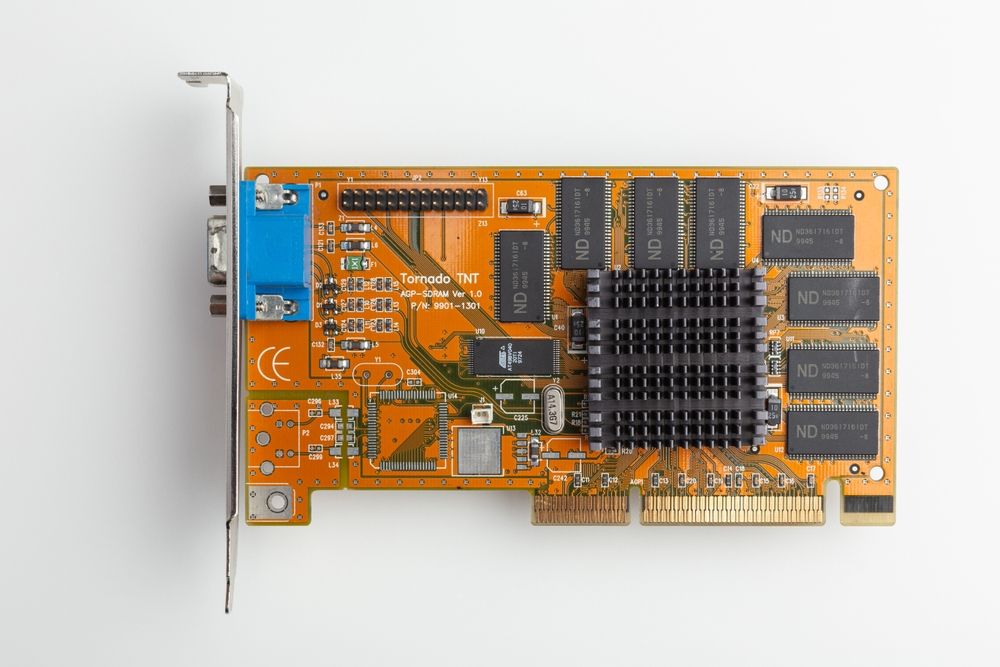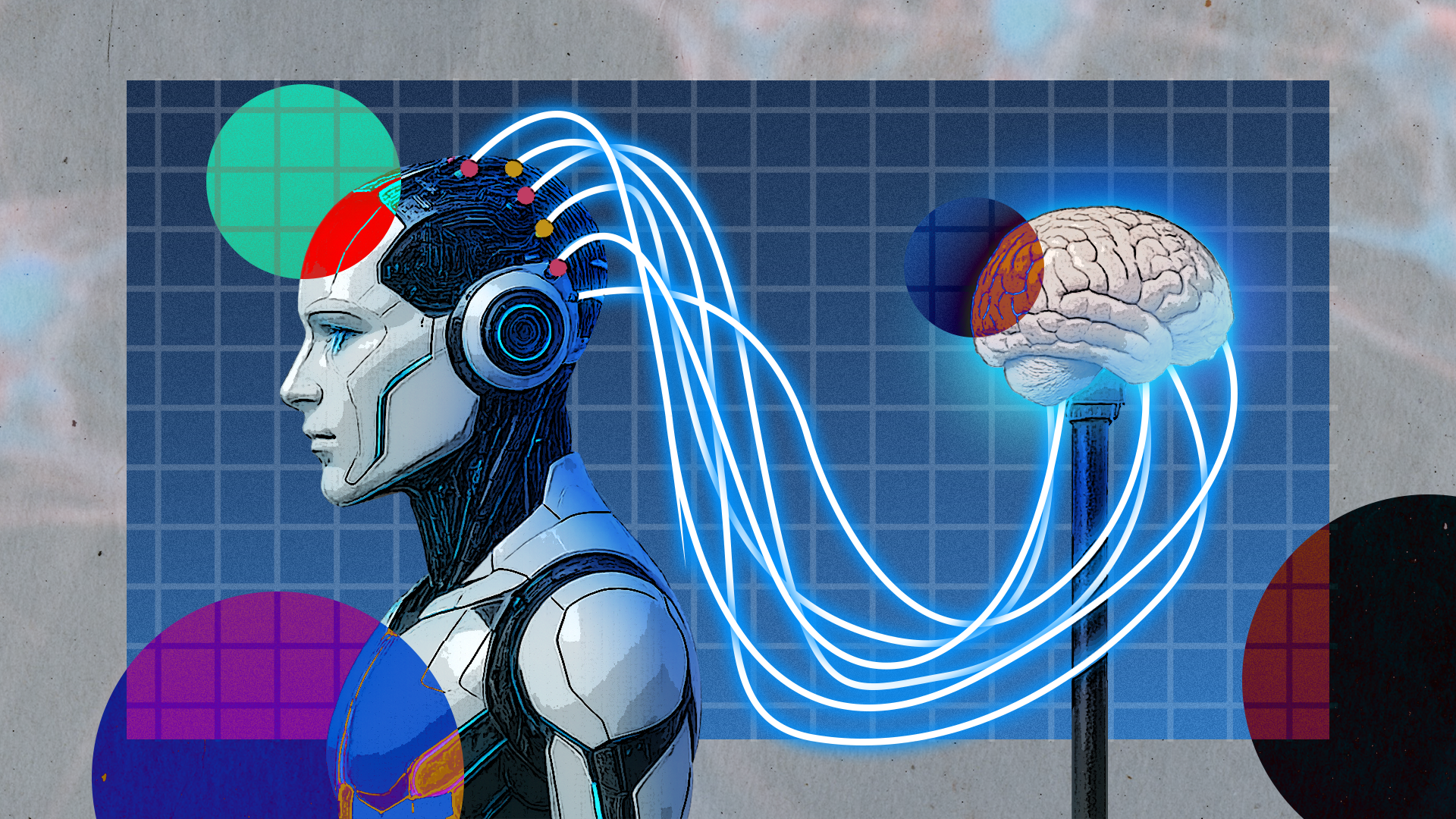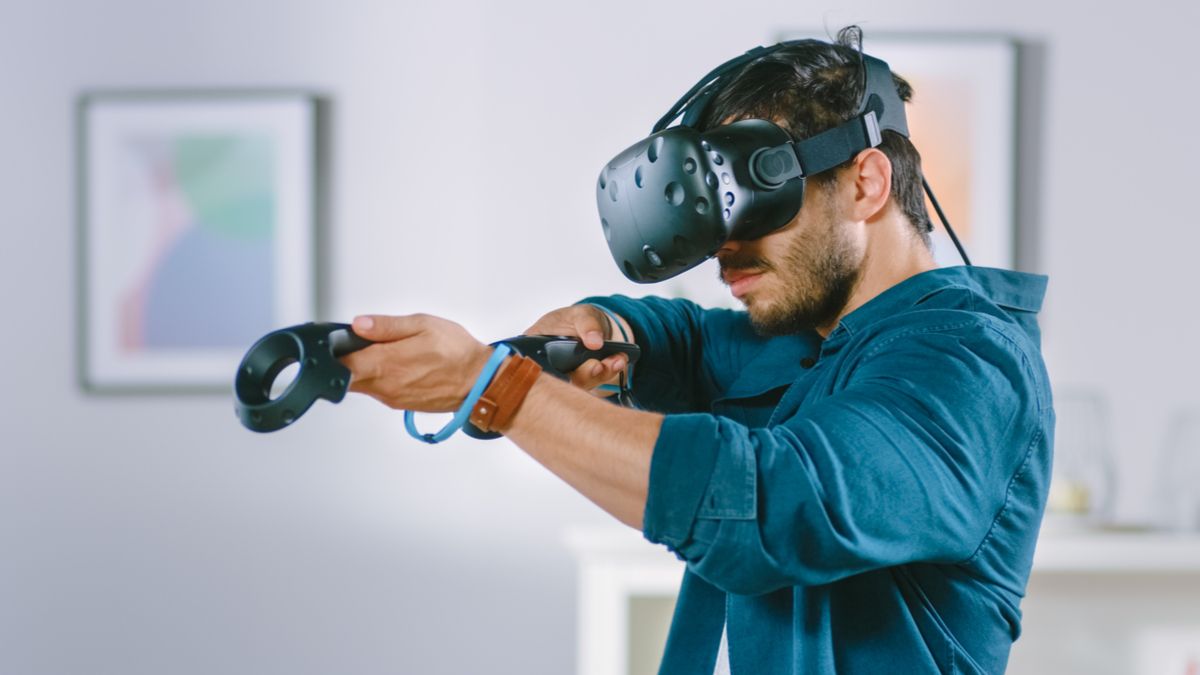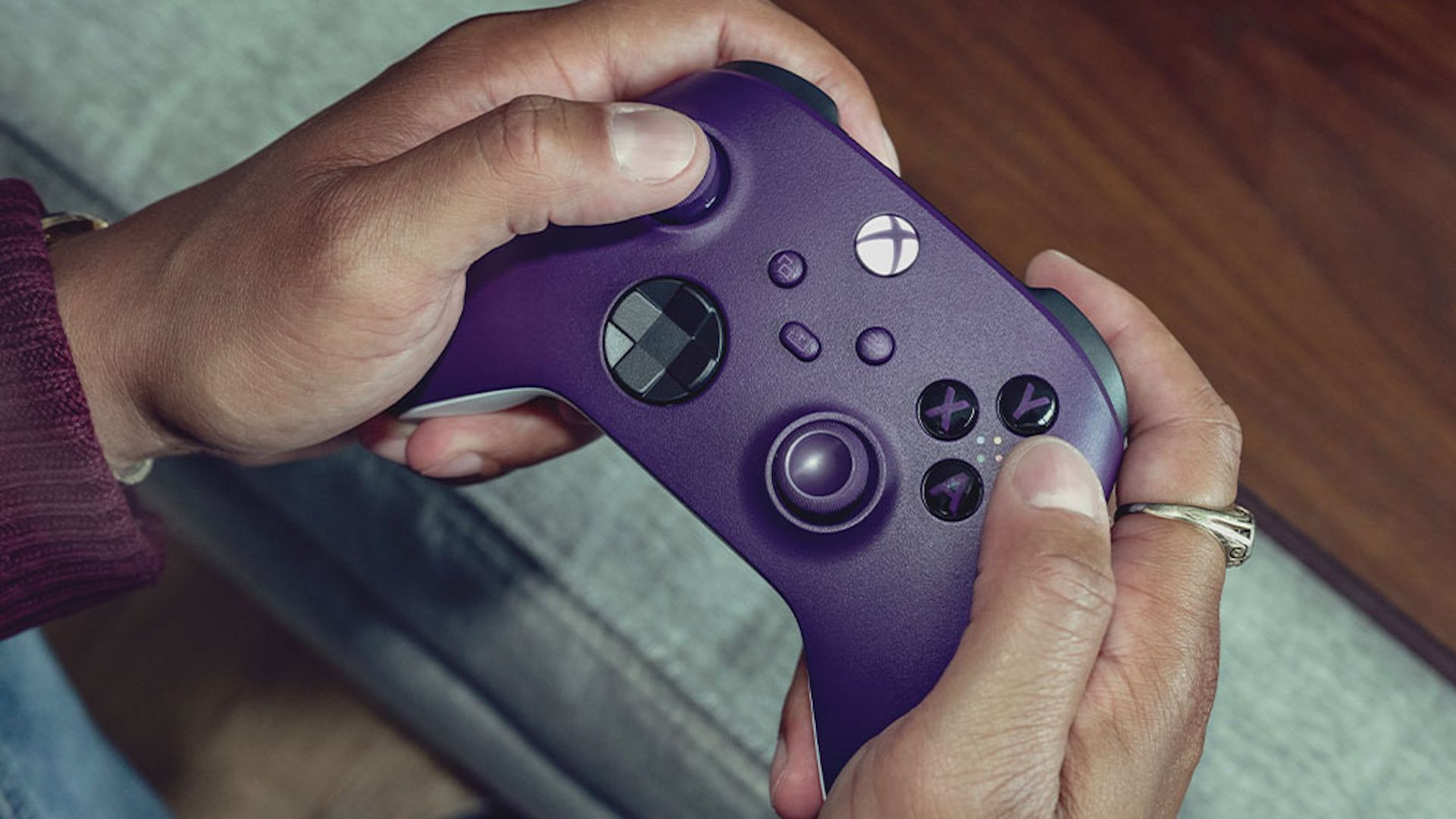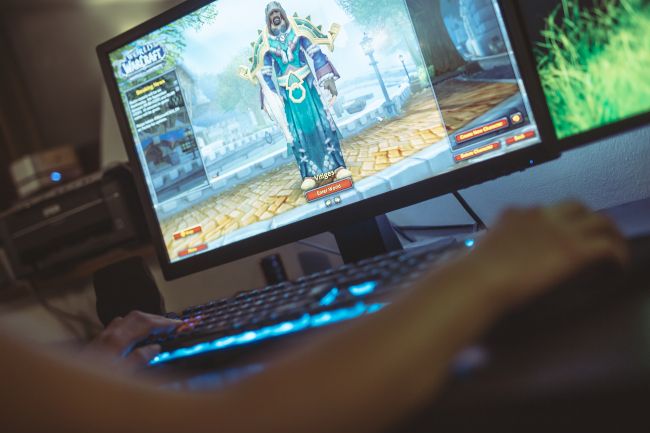While a huge number of people play video games in the world, it’s still only a fraction of the world population that takes part in this hobby. In fact, if you’re a gamer, you probably know that non-gamers don’t really take video games very seriously, and even look down on them and their players.
What these good folks don’t know, is that not only have video games been a major contributor to the world they enjoy today, but also the radical new world we’re all going to live in soon. Don’t believe me? Here’s how video games have built the modern world of today.
7
AI Hardware Is Built on Video Game Hardware
See that graphics card up there? That’s an NVIDIA Riva TNT card. One of the earliest graphics cards offered by the company that’s today the leading provider of cutting-edge GPUs that power AI systems in data centers, robots, and personal computers.
NVIDIA’s entire AI empire is based on decades of financial support from video game enthusiasts, who paid for the research and development that created this hardware. Video games are incredibly complex pieces of software, and as time went on there were numerous complex problems that had to be solved both by programmers and hardware designers to make games more realistic and sophisticated.

Related
The 10 Most Influential Graphics Cards of All Time
This article might be a little too graphic for some audiences.
It just so happens, that the same massively-parallel hardware chips you need to render beautiful game graphics, are also perfect for simulating neural networks. Without the video game industry pushing the development of this hardware, as well as CPUs, RAM, storage and all the rest, it’s doubtful we would already be here when it comes to AI and all its boons, if ever.
After all, very few mainstream computer applications such as web browsers or word processors need more than just a moderate amount of processing power. It’s the relentless hunger of video games for faster hardware that push the average computer user to upgrade, and decades of this have brought us to this point.
6
Robotic Training Sims Are Built on Game Engines
Video game engines have developed over the decades into complex reality simulation software packages, in lock step with that advanced hardware I just mentioned.
This obviously has many applications outside gaming, but this very same technology is being used to train robots in virtual reality so they can learn to walk, or do common tasks before being given real-world bodies that are both dangerous and expensive if you don’t prepare the “brains” of the robot well enough.
Through software simulation, thousands of virtual robots can make millions of attempts to complete tasks until they learn to do it right with a high level of success. Only then can they be let loose in the real world. So when the robots arrive, and they’ll arrive soon, you’ll have video game technology and its offshoots to thank for the labor they’ll provide.

Related
Robots Are Taking Over Public Spaces—Are We Ready?
One minute, robots are delivering pizza. Next, they’re cracking jokes in nursing homes. Are they taking over or just making life easier?
5
Game Engines Have Leaked Into Film and Architecture
Computer graphics for film and television and those used in games have always been somewhat segregated, with film CG being pre-rendered and using advanced ray-tracing light simulations to approach photo-realism.
Now, thanks to advanced game engines and super-powerful GPUs that can perform ray-tracing in real time, along with some AI magic to speed things up, there are numerous shows and movies that use real-time game engine graphics—except not how you think.
First proven on the set of The Mandalorian, the “volume” is a soundstage surrounded by LCD screens that project graphics in real time from a computer running Unreal Engine. This solves the issue of green screens where characters have to be rotoscoped or chroma-keyed out of the scene to replace the background. It means that the virtual CG now casts real and correct light on the actors, and it means the actors feel immersed in the scene, rather than just looking at a bunch of mono-color screens.

Related
Why the Witcher 4 Trailer Being “Pre-rendered” on an RTX 5090 Means Nothing
Peak marketing tomfoolery.
4
VR and AR Are Built on Gaming Tech and Knowledge
Modern VR and AR are inextricably linked with video game technology and its industry. Most VR and AR titles are video games themselves, but the core technologies that make VR possible were incubated in the world of games: 3D graphics, physics simulations, innovative controllers, and most of the other components that makes VR and AR possible would not exist if not for video games.
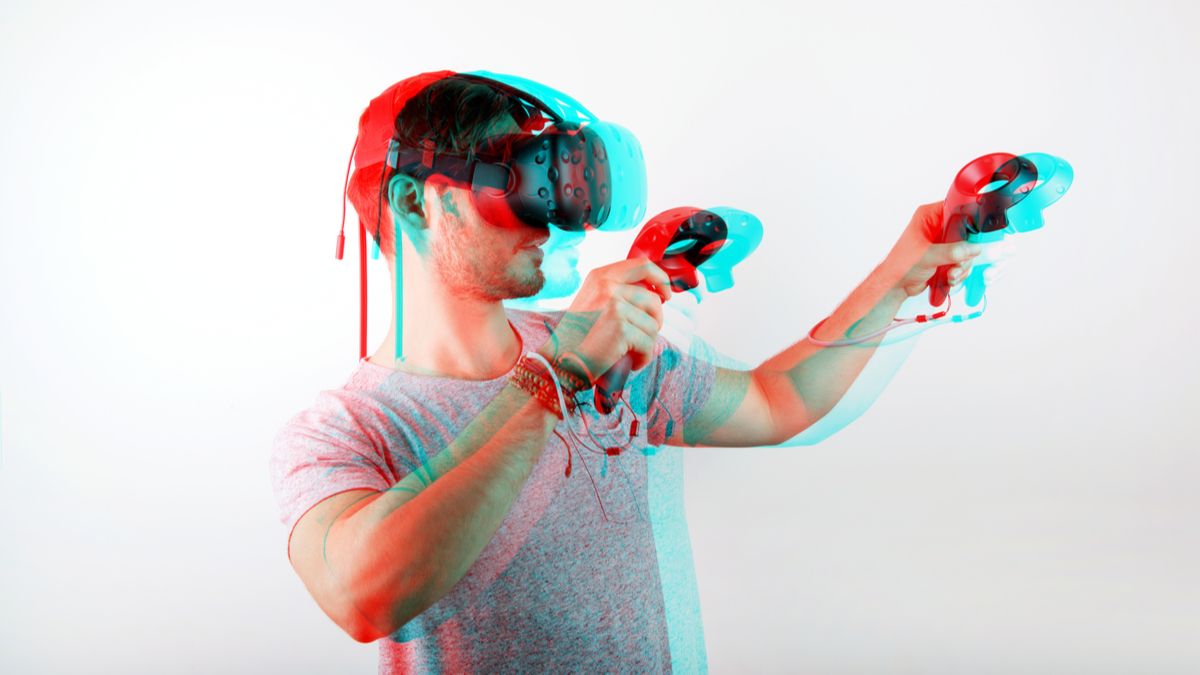
Related
What Is Extended Reality (XR), and Will it Replace VR?
XR is a concept that ties together AR, VR, and MR into an interconnected field.
3
Video Game Interfaces and Controllers Are in the Real World Now
Video games need to relay lots of information to players, often while they are expected to control complex movements and make split-second decisions. Whether you’re using the infotainment system in a car, or operating a drone, there’s some video game interface DNA in the layout and operating principles used to make these systems intuitive.
Perhaps the biggest impact has been in the design of the video game controller. Obviously, modern camera drones use this, sharing a lineage with RC aircraft controllers, but you’ll find what are essentially game controllers in use in the military, as per Wired. Apart from the modern gamepad design being so versatile and intuitive, it certainly helps that generations of recruits have grown up using exactly this technology for their entertainment.

8BitDo Ultimate 2 Wireless Controller
- Brand
-
8BitDo
- Platform
-
Windows, Android
2
Gamification Brought Game Design to Work and Education
You may have heard of “gamification”, but likely don’t know exactly what it means. It’s a simple concept, and basically just means using elements of game design in a context that’s not a game. Those loyalty stamps you get at the coffee shop or at a car wash are a form of gamification, for example.
While it’s not video-game specific, video games have pushed the art and science of game design forward beyond what’s possible with analog games. For better or worse, many of the design elements, mechanics, and behavior modification systems that games employ have now been applied to marketing, and also to education, to name two prominent areas.

Related
5 Psychological Tricks in Free-To-Play Games (and How to Avoid Them)
Popular games are using psychological tricks on you.
1
Virtual Gaming Worlds Let Us Study Human Behavior
Social sciences like psychology are important to help us understand ourselves, and predict what we’ll do under different circumstances. However, getting good data and designing meaningful experiments is extremely difficult. We can’t observe people in large enough numbers or in enough detail. Moreover, some experiments would simply be unethical.
When people congregate in virtual worlds, it creates a golden opportunity for social scientists to learn more about us. Using virtual worlds as laboratories is a well-known modern research method. Games such as World of Warcraft provided researchers with information that could help understand pandemics (as per the Washington Post) or how people cooperate or form groups.
As more of our lives move into simulated virtual worlds, our level of understanding when it comes to good old Homo sapiens sapiens might get a big boost, just in time as we welcome advanced artificial intelligences into our society. Not bad for something that started with Pong and Space Invaders.


